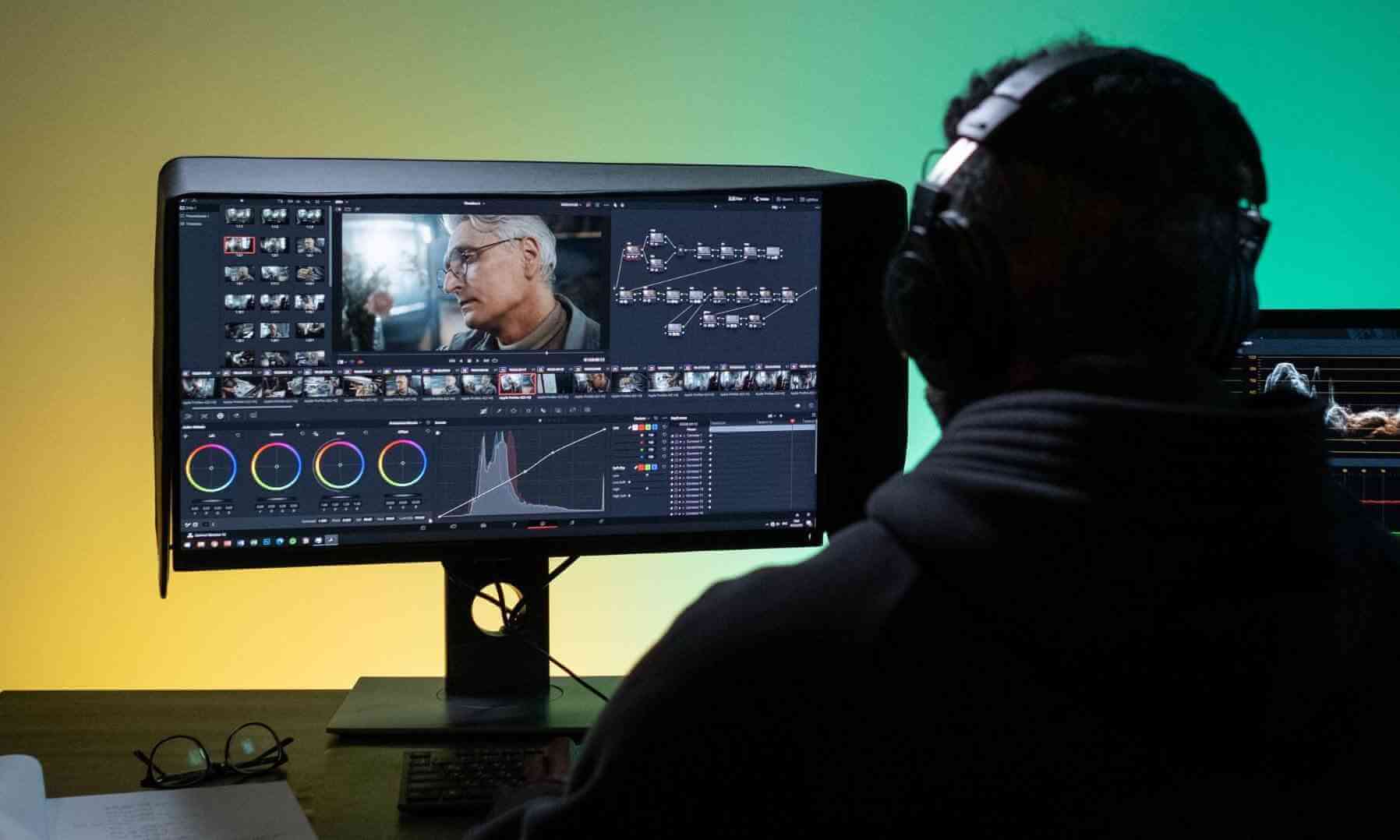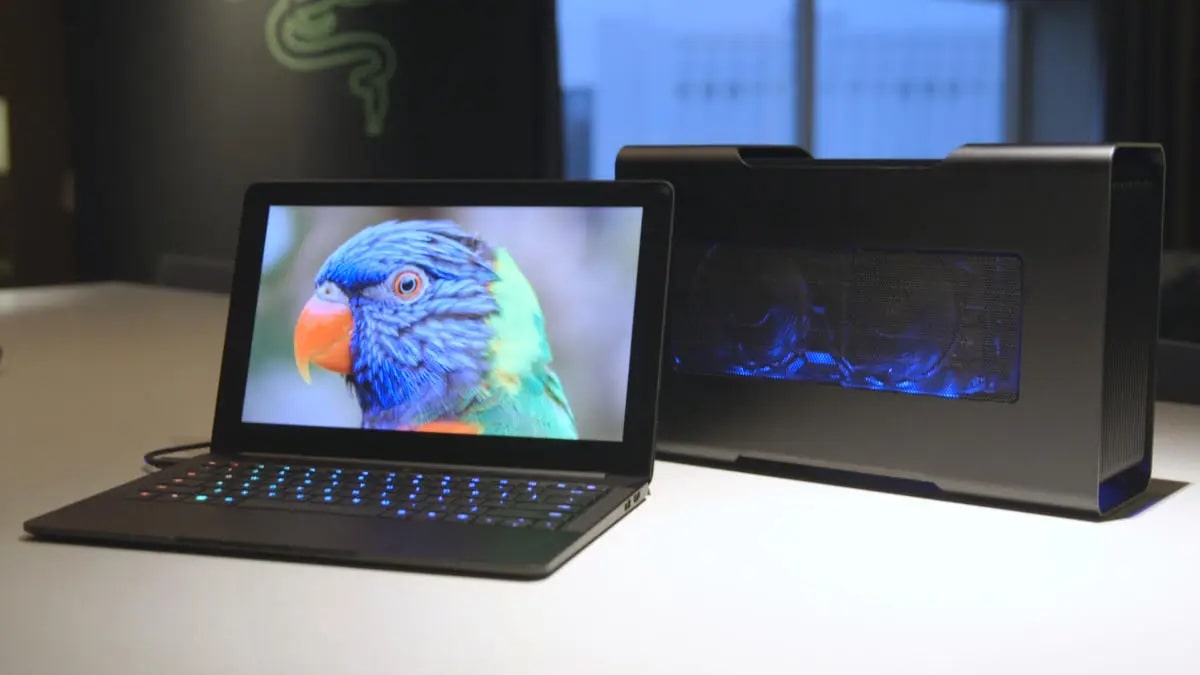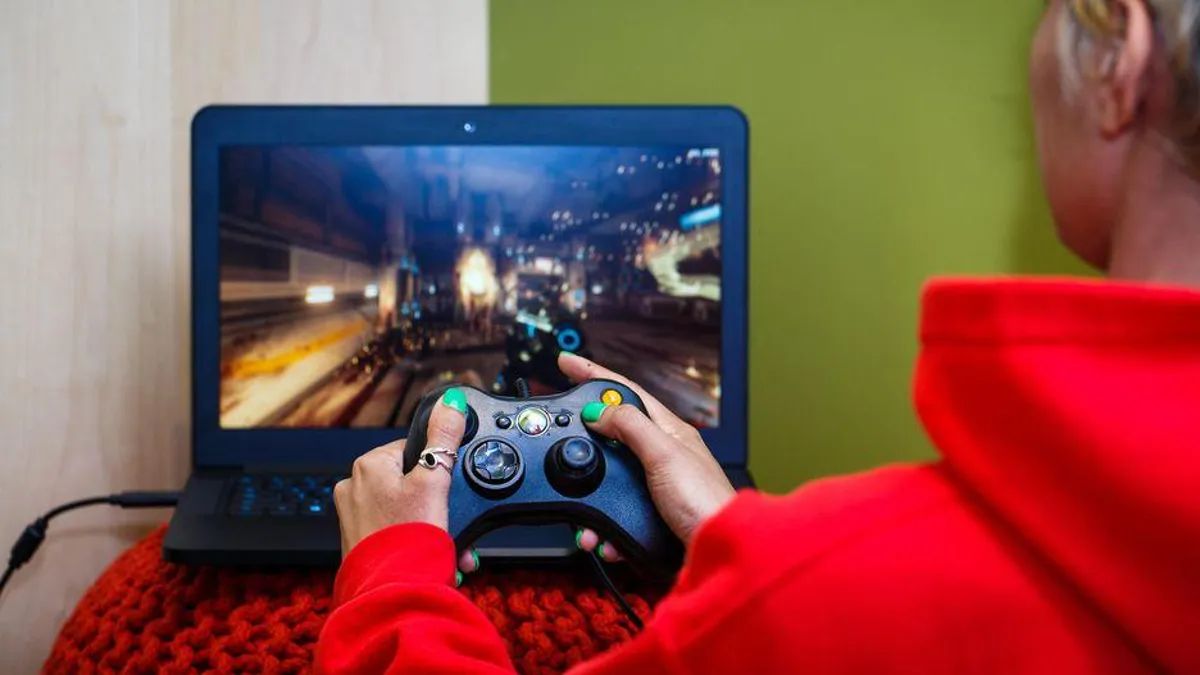Introduction
A graphics card is an essential component of any computer system, especially for those who use their computers for gaming, graphic design, video editing, or other visually intensive tasks. It is responsible for rendering and displaying images, videos, and animations on your monitor. However, over time, you may notice a decline in graphics card performance, leading to slower frame rates, lag, and poor visual quality.
Fortunately, there are several steps you can take to improve graphics card performance and enhance your overall computing experience. In this article, we will explore various techniques and optimizations that can help you get the most out of your graphics card.
Before attempting any optimization techniques, it’s important to note that the effectiveness of these methods may vary depending on your specific hardware configuration and the software applications you use.
Now, let’s delve into the various ways you can boost your graphics card performance and enjoy smooth, high-quality visuals on your computer.
Update Graphics Card Drivers:
One of the first steps in improving graphics card performance is to ensure that you have the latest drivers installed. Graphics card manufacturers regularly release driver updates to optimize performance, fix bugs, and add new features. Visit the manufacturer’s website or use their respective software utilities to check for and install any available updates.
Adjust Graphics Card Settings:
Most graphics cards have control panel software that allows you to fine-tune various settings to optimize performance. You can adjust options such as anti-aliasing (smoothen jagged edges), anisotropic filtering (improve texture quality), and v-sync (synchronize frame rates with your monitor’s refresh rate). Experiment with these settings to find the right balance between performance and visual quality.
Optimize In-Game Graphics Settings:
If you’re a gaming enthusiast, optimizing the graphics settings within your game can significantly improve performance. Lowering settings such as resolution, texture quality, and shadow details can help achieve smoother frame rates. Many games also have presets like “low,” “medium,” or “high,” which are predetermined combinations of settings tailored to different hardware capabilities.
Clean Dust from the Graphics Card:
Over time, dust can accumulate on the components of your graphics card, leading to heat buildup and reduced performance. Regularly cleaning your graphics card and other internal components can help keep temperatures low and improve airflow. Use compressed air or a soft brush to remove any dust or debris from the fans, heatsinks, and other areas.
Overclocking the Graphics Card:
For advanced users, overclocking the graphics card can provide a significant performance boost. Overclocking involves increasing the clock speeds of the GPU and memory to run at higher frequencies than the manufacturer’s default settings. However, be cautious when overclocking, as it can generate more heat and may require additional cooling solutions to prevent damage to the card.
Upgrade to a Newer or More Powerful Graphics Card:
If you’ve exhausted all the optimization options and still aren’t satisfied with the performance of your current graphics card, upgrading to a newer or more powerful model may be the best solution. Keep in mind that this option may require additional financial investment and may also involve checking compatibility with your motherboard and power supply.
By implementing these techniques, you can enhance the performance of your graphics card and ensure an immersive visual experience in your applications and games. Experiment with different optimizations and find the best settings that work for your specific needs and hardware configuration.
Update Graphics Card Drivers
One of the most important steps you can take to improve graphics card performance is to ensure that you have the latest drivers installed. Graphics card manufacturers regularly release driver updates to optimize performance, fix bugs, and add new features. Updating your graphics card drivers can have a significant impact on the overall stability and performance of your system.
To update your graphics card drivers, you can follow these steps:
- Identify your graphics card manufacturer: Before you can update your drivers, you need to determine the manufacturer of your graphics card. The most popular manufacturers include NVIDIA, AMD/ATI, and Intel. You can usually find this information by checking your computer’s specifications or by opening the Device Manager on your Windows computer.
- Visit the manufacturer’s website: Once you have identified the manufacturer, visit their official website. Most manufacturers provide a dedicated support section where you can find the latest driver updates for your specific graphics card model.
- Download the latest drivers: On the manufacturer’s website, locate the driver download section and search for the appropriate driver for your graphics card model and operating system. Make sure to download the correct version for your specific hardware and operating system.
- Install the drivers: After downloading the driver file, run the installation program and follow the on-screen instructions. Depending on your operating system and manufacturer, you may need to uninstall the existing drivers before installing the new ones. It is recommended to create a system restore point before making any changes to your drivers.
- Restart your computer: Once the installation is complete, restart your computer to ensure that the new drivers are properly applied and integrated into the system.
Updating your graphics card drivers provides several benefits. Firstly, it ensures that your graphics card is running on the latest optimization settings, improving the overall performance and stability of your system. Secondly, updated drivers often contain bug fixes and patches that can address issues related to graphical glitches, crashes, and compatibility problems with certain applications or games.
It is recommended to check for driver updates periodically, especially if you are experiencing any performance or stability issues with your graphics card. Some manufacturers provide automatic driver update utilities that can simplify the process by automatically scanning for and installing the latest driver updates.
Keep in mind that while updating your graphics card drivers can have a positive impact on performance, it may not yield significant improvements in every scenario. Performance gains largely depend on the specific hardware configuration and the applications or games you use. However, keeping your drivers up to date is still a good practice to ensure the best possible performance and compatibility with the latest software releases.
Adjust Graphics Card Settings
Adjusting the settings of your graphics card can significantly improve its performance and enhance your overall visual experience. Most graphics cards come with control panel software that allows you to fine-tune various settings to optimize performance. By customizing these settings, you can strike a balance between performance and visual quality according to your preferences and hardware capabilities.
Here are some settings that you can adjust to optimize your graphics card:
- Anti-Aliasing: Anti-aliasing is a technique used to smooth out jagged edges in rendered images. Increasing the anti-aliasing setting can improve the overall visual quality by reducing the appearance of aliasing. However, higher anti-aliasing settings can be demanding on the graphics card, so finding the right balance is crucial.
- Anisotropic Filtering: Anisotropic filtering improves texture quality by making distant textures appear sharper and more detailed. Similar to anti-aliasing, higher levels of anisotropic filtering can impact performance. Experiment with different levels to find the right balance between image quality and performance.
- V-Sync: V-sync synchronizes the frame rate of your graphics card with the refresh rate of your monitor. Enabling v-sync can help eliminate screen tearing, where the top and bottom halves of an image appear out of sync. However, enabling v-sync can have a slight impact on performance, so consider your hardware capabilities before enabling this setting.
- Power Management: Graphics cards often come with power management features that allow you to prioritize performance or energy efficiency. Choosing a performance-oriented power management mode can allocate more power to the graphics card, improving its overall performance. However, this can result in increased heat generation, so proper cooling is necessary.
- Frame Rate Limit: Some graphics card control panels allow you to set a limit on the maximum frame rate your card can produce. By setting a frame rate limit, you can prevent excessive heating and reduce power consumption. Additionally, limiting the frame rate can help ensure a more consistent and smooth gaming experience.
When adjusting these settings, it’s important to strike a balance between performance and visual quality that suits your preferences and hardware capabilities. While higher settings can improve visual fidelity, they may also introduce performance bottlenecks or cause overheating. Conversely, lower settings can yield smoother performance but may sacrifice some visual details.
It’s recommended to experiment with different settings and observe their impact on performance and visual quality. Some graphics card control panels also provide preset options, such as “Performance,” “Balanced,” or “Quality,” which automatically adjust a combination of settings for different performance profiles.
Lastly, it’s important to note that adjusting graphics card settings may not have a significant impact on performance for all applications or games. Some software titles have their own built-in graphics settings that may override the settings from the graphics card control panel. It’s worth exploring the options within each specific application to optimize performance further.
By taking the time to adjust and optimize the settings of your graphics card, you can unlock its full potential and enjoy an enhanced visual experience with improved performance and image quality.
Optimize In-Game Graphics Settings
When it comes to optimizing graphics card performance, one of the most effective steps you can take is to optimize the in-game graphics settings. In-game graphics settings allow you to fine-tune various visual aspects of the game to achieve a balance between performance and visual quality. By adjusting these settings, you can ensure smooth gameplay without sacrificing too much in terms of visual fidelity.
Here are some key settings to consider when optimizing in-game graphics:
- Resolution: The resolution setting determines the number of pixels displayed on your screen. Higher resolutions such as 1080p, 1440p, or 4K offer sharper and more detailed visuals but require more processing power. If you’re experiencing performance issues, lowering the resolution can help improve frame rates.
- Texture Quality: Texture quality affects the level of detail and sharpness of textures in the game. Higher texture quality settings result in more realistic and detailed textures but can have a significant impact on performance. Adjust this setting based on your graphics card’s capabilities and the desired balance between visual quality and performance.
- Shadow Details: Shadow details influence the rendering of shadows in the game. Higher shadow detail settings result in more realistic and complex shadows but can also put a strain on your graphics card. Consider reducing this setting if you notice a drop in performance during gameplay.
- Particle Effects: Particle effects include elements such as smoke, fire, and sparks present in the game. While particle effects create a visually immersive experience, they can also be resource-intensive. Adjust this setting to strike a balance between visual quality and performance.
- Post-Processing Effects: Post-processing effects, such as motion blur, depth of field, and ambient occlusion, enhance the visual aesthetics of the game. However, these effects can have a significant impact on performance. Disable or reduce post-processing effects if you need to boost your graphics card’s performance.
- Draw Distance: Draw distance determines how far objects are rendered in the game world. A larger draw distance results in a more immersive and expansive environment, but it can also strain your graphics card. Adjust this setting based on your hardware capabilities and the performance you desire.
It’s important to note that every game has its own unique set of graphics settings and terminology, so the options available may vary from game to game. Take the time to explore the options provided by each specific game and adjust them according to your preferences and hardware capabilities.
Additionally, some games offer preset graphics settings, such as “Low,” “Medium,” or “High.” These presets automatically adjust a combination of graphics settings to provide a balanced experience based on your hardware’s capabilities. Experiment with different presets to find the best balance between performance and visual quality that suits your needs.
Finally, keep in mind that the optimal graphics settings may vary depending on the specific hardware configuration of your graphics card and the requirements of the game. It’s worth researching online forums, guides, or discussions specific to the game you are playing to get recommendations from other players and enthusiasts.
By optimizing the in-game graphics settings, you can ensure a smoother gaming experience while still enjoying visually stunning graphics, allowing you to fully immerse yourself in the world of your favorite games.
Clean Dust from Graphics Card
Over time, dust and debris can accumulate on the components of your graphics card, affecting its performance and longevity. Dust can block airflow, leading to increased temperatures and potential overheating. To maintain optimal performance, it is important to regularly clean your graphics card and remove any accumulated dust.
Here is a step-by-step guide on how to clean dust from your graphics card:
- Power down your computer: Before you begin cleaning, make sure to shut down your computer completely. Unplug the power cord from the wall outlet to ensure your safety.
- Open your computer case: Depending on your computer case, you may need to remove screws or slide panels to access the internal components. Follow the manufacturer’s instructions for safely opening your computer case.
- Locate your graphics card: Once the computer case is open, locate your graphics card. The graphics card is usually installed in a PCIe slot on the motherboard and may have a cooling fan and heat sink attached to it.
- Use compressed air: Use a can of compressed air to blow away any dust or debris from the graphics card components. Pay special attention to the cooling fan and heat sink, as these areas tend to accumulate the most dust. Hold the can upright and use short bursts of air to prevent any condensation from forming.
- Brush away remaining dust: After using the compressed air, you can use a soft-bristled brush to gently brush away any remaining dust particles. Be careful not to apply excessive pressure or damage any components.
- Reassemble your computer: Once you have removed the dust, carefully reassemble your computer case by securing any panels or screws that were previously removed. Make sure everything is properly seated and secure.
- Power up your computer: Plug the power cord back into the wall outlet and power up your computer. Monitor your graphics card’s temperature and performance to ensure that the cleaning process has made a positive impact.
- Regular maintenance: To prevent excessive dust buildup in the future, consider implementing regular maintenance practices. This could involve cleaning your computer and its components every few months or using dust filters on intake fans to reduce the amount of dust entering your system.
Cleaning the dust from your graphics card can help improve airflow, maintain stable temperatures, and ultimately enhance its performance. By regularly cleaning your graphics card, you can ensure that it operates at optimal levels and prolong its lifespan.
It is important to exercise caution when cleaning your graphics card to avoid causing any damage. If you are unsure about the process or uncomfortable performing it yourself, consider seeking assistance from a professional.
Remember, maintaining a clean and dust-free environment for your graphics card and other computer components is vital for optimal performance and longevity.
Overclocking the Graphics Card
For advanced users looking to squeeze out even more performance from their graphics card, overclocking can be an effective technique. Overclocking involves adjusting the clock speeds of the graphics card’s GPU and memory to higher frequencies than the manufacturer’s default settings. By increasing these clock speeds, you can potentially achieve higher frame rates and better overall performance in games and graphics-intensive tasks.
Before attempting to overclock your graphics card, it’s essential to understand the potential risks involved. Overclocking can generate additional heat and put extra stress on the components, which may lead to system instability, crashes, or even permanent damage if not done correctly. Proceed with caution and take the necessary precautions to ensure the safety of your hardware.
Here are some steps and considerations to keep in mind when overclocking your graphics card:
- Research your graphics card: Start by researching your specific graphics card model to understand its overclocking potential. Look for online resources, forums, or user guides specific to your card to gather information on what others have achieved with similar setups.
- Use overclocking software: Many graphics card manufacturers provide their own overclocking software utilities, such as MSI Afterburner or ASUS GPU Tweak. These utilities allow you to adjust clock speeds, voltages, and fan speeds in a controlled manner.
- Incrementally increase clock speeds: Begin by increasing the clock speeds gradually, starting with the GPU core clock and then moving on to the memory clock. Increase the clock speeds in small increments, such as 10-25 MHz, and test for stability after each adjustment.
- Monitor temperatures and stability: While overclocking, monitor the temperatures of your graphics card to ensure they remain within safe limits. Additionally, test the stability of your overclocked settings by running stress tests or benchmarking software. If your system crashes or experiences artifacts, it may be an indication that the overclock is too high.
- Adjust voltage if necessary: Increasing clock speeds may require a slight increase in voltage to maintain stability. However, be cautious when adjusting voltages, as excessive voltage can cause overheating or damage to the graphics card. Incrementally increase voltage within safe limits and monitor temperatures closely.
- Implement stable settings: Once you have found stable overclocking settings, make sure to save them in the overclocking software or store them in a profile. This allows you to easily load your preferred settings when needed, without having to manually adjust the clock speeds each time.
- Ensure adequate cooling: Overclocking generates additional heat, so it’s important to ensure that your graphics card has adequate cooling. Make sure the cooling fans are clean and functioning properly. Consider aftermarket cooling solutions if necessary, such as adding more case fans or installing an aftermarket GPU cooler.
- Monitor and reevaluate: Regularly monitor the temperatures and performance of your overclocked graphics card. Reevaluate the overclocked settings if you encounter stability issues or if performance gains are not substantial enough to justify the higher clock speeds.
Overclocking your graphics card can provide a noticeable boost in performance, but it requires careful consideration and monitoring. Always remember to prioritize stability, keep temperatures in check, and be aware of the limitations of your specific hardware.
Keep in mind that not all graphics cards overclock the same way, and the results can vary. The level of performance increase achievable through overclocking depends on factors such as the quality of your graphics card’s silicon and its cooling capabilities.
Lastly, it’s worthwhile to note that overclocking can void warranties or may not be supported by certain manufacturers. Make sure to check the warranty terms and conditions before attempting to overclock your graphics card.
Upgrade to a Newer or More Powerful Graphics Card
If you’ve exhausted all other optimization options and are still unsatisfied with the performance of your current graphics card, upgrading to a newer or more powerful model may be the solution. Graphics card technology advances rapidly, and newer models often offer significant performance improvements over their predecessors.
Here are some reasons why upgrading to a newer or more powerful graphics card may be beneficial:
- Increased Performance: Upgrading to a more powerful graphics card can provide a substantial performance boost, allowing you to run demanding games and applications with higher resolutions, smoother frame rates, and enhanced visual effects. This is particularly beneficial for gamers and professionals in fields such as graphic design, video editing, or 3D modeling.
- Improved Compatibility: Newer graphics cards often come with updated drivers and better compatibility with the latest software. Having a graphics card that is up-to-date ensures that you can take full advantage of new features and optimizations in the latest applications and games.
- Support for New Technologies: Graphics card upgrades can also introduce support for new technologies, such as ray tracing or virtual reality. These technologies enhance the visual quality and immersion in games and other visually intensive applications.
- Future-Proofing: Investing in a more powerful graphics card ensures that your system is ready for future advancements in software and visual technologies. By choosing a card with higher performance capabilities, you can extend the lifespan of your system and postpone the need for further upgrades.
- Enhanced Connectivity: Newer graphics cards may offer additional connectivity options, such as HDMI 2.1, DisplayPort, or USB-C, which can be advantageous for connecting to high-resolution monitors, multiple displays, or external devices.
Before upgrading your graphics card, there are a few factors to consider:
- Compatibility: Check the compatibility of the new graphics card with your motherboard, power supply, and case. Ensure that your system has the necessary power connectors and physical space to accommodate the new card.
- Budget: Determine your budget for the upgrade and research the available options within that price range. Graphics card prices can vary significantly, so it’s essential to find the right balance between performance and cost.
- Future needs: Consider your future needs and the expected demands of the applications you plan to use. If you anticipate working with more graphics-intensive software or playing advanced games, opting for a higher-end graphics card may provide better longevity and performance down the line.
When upgrading your graphics card, follow these steps:
- Research and select a new graphics card: Research different models and read reviews to determine which graphics card best suits your needs and budget. Consider factors such as performance, cooling capabilities, and manufacturer reputation.
- Install the new graphics card: Follow the manufacturer’s instructions to safely remove the old graphics card and install the new one. Make sure to properly connect power cables, secure the card in its PCIe slot, and update the graphics card drivers once the new card is installed.
- Test and optimize: Once the new graphics card is installed, run benchmark tests and monitor its performance. Adjust graphics settings as necessary to achieve the desired balance between performance and visual quality.
An upgraded graphics card can breathe new life into your system and provide a significant boost in performance for both gaming and professional applications. It is a worthwhile investment for those seeking to enhance their visual experience and stay at the forefront of graphics technology.
Conclusion
Improving graphics card performance is essential for gamers, graphic designers, video editors, and anyone who relies on high-quality visuals. By following the steps outlined in this article, you can optimize your graphics card and ensure a smooth and visually immersive experience on your computer.
We discussed the importance of updating graphics card drivers to keep them optimized and bug-free. Additionally, adjusting graphics card settings according to your preferences and hardware capabilities can significantly enhance performance while maintaining visual quality.
Optimizing in-game graphics settings allows you to fine-tune visual aspects to strike a balance between performance and visual fidelity. Cleaning dust from your graphics card ensures proper airflow and prevents overheating, while overclocking can provide a substantial performance boost for advanced users willing to assume the risks.
However, if you’ve exhausted all optimization options and are still unsatisfied with your graphics card’s performance, upgrading to a newer or more powerful model may be necessary. This allows you to enjoy enhanced visuals, improved compatibility with the latest software, and support for new technologies.
Remember to research and consider factors such as compatibility, budget, and future needs before making any upgrade decisions. Always prioritize stability, monitor temperatures, and take precautions to ensure the safety of your hardware.
By applying these techniques and considering the various options available, you can optimize your graphics card and elevate your computing experience. Whether you’re a gamer striving for smoother frame rates or a graphic designer aiming for more realistic visuals, taking care of your graphics card ensures that you get the most out of your system and stay ahead in the ever-evolving world of visuals and graphics technology.










